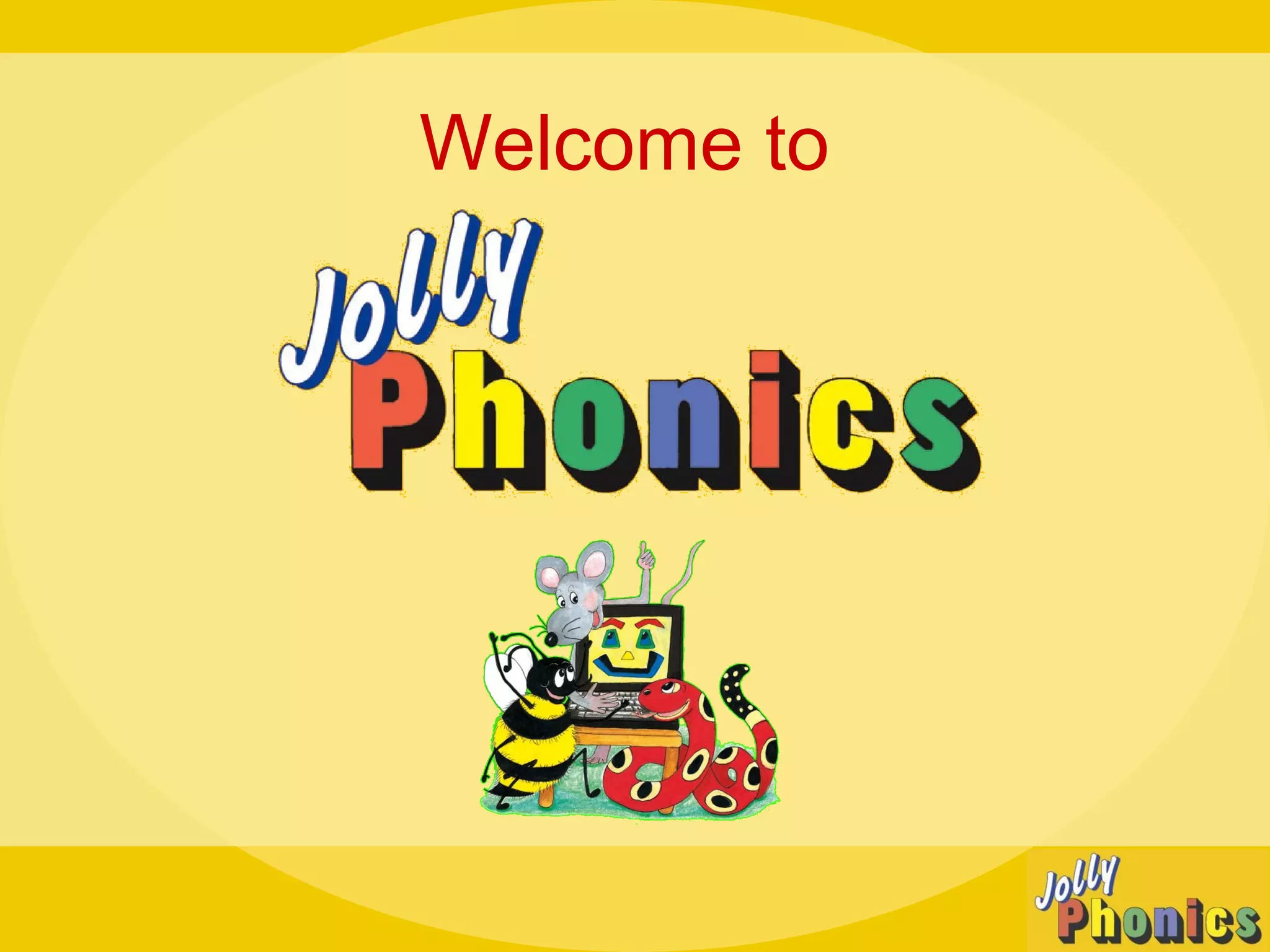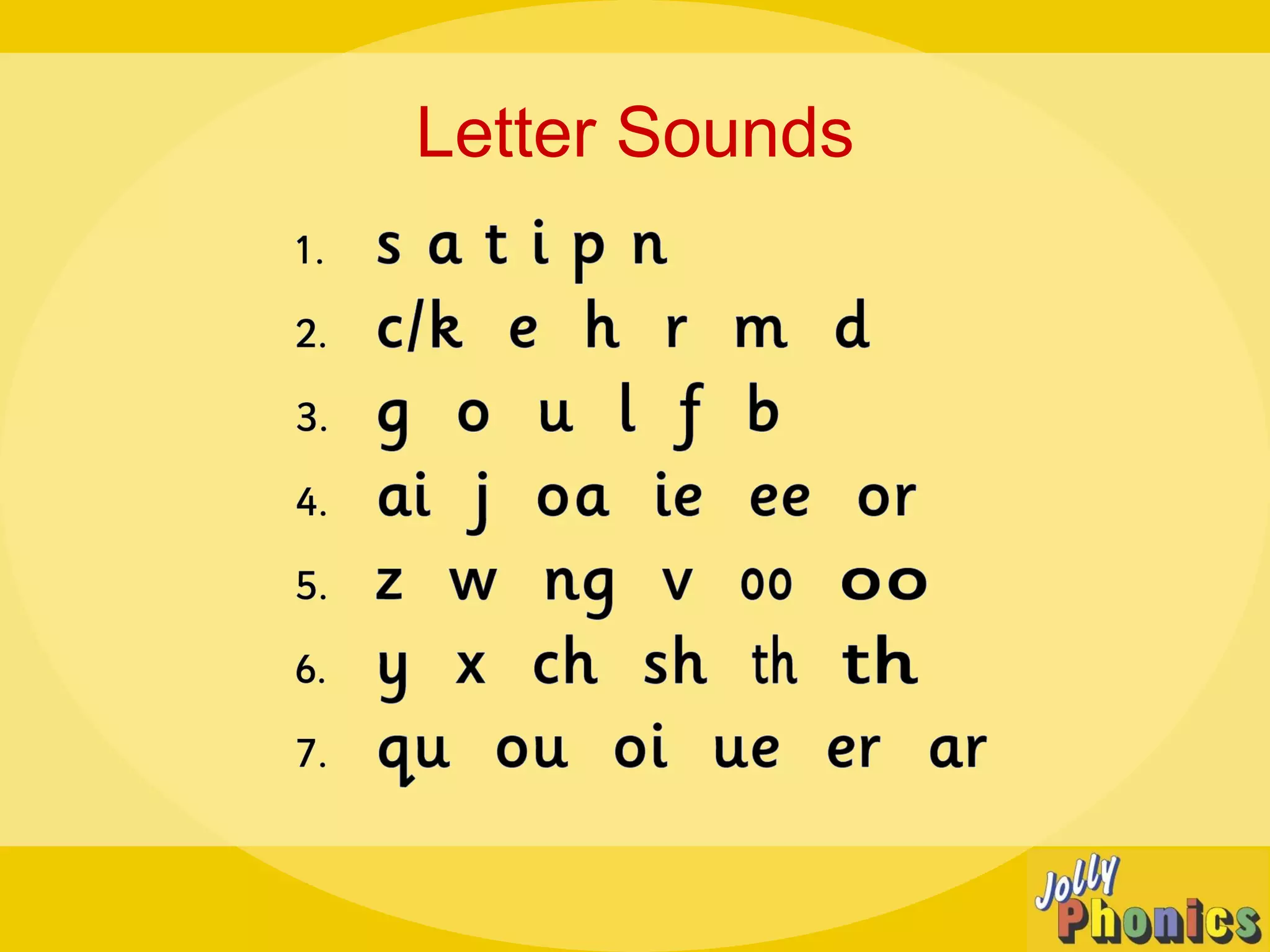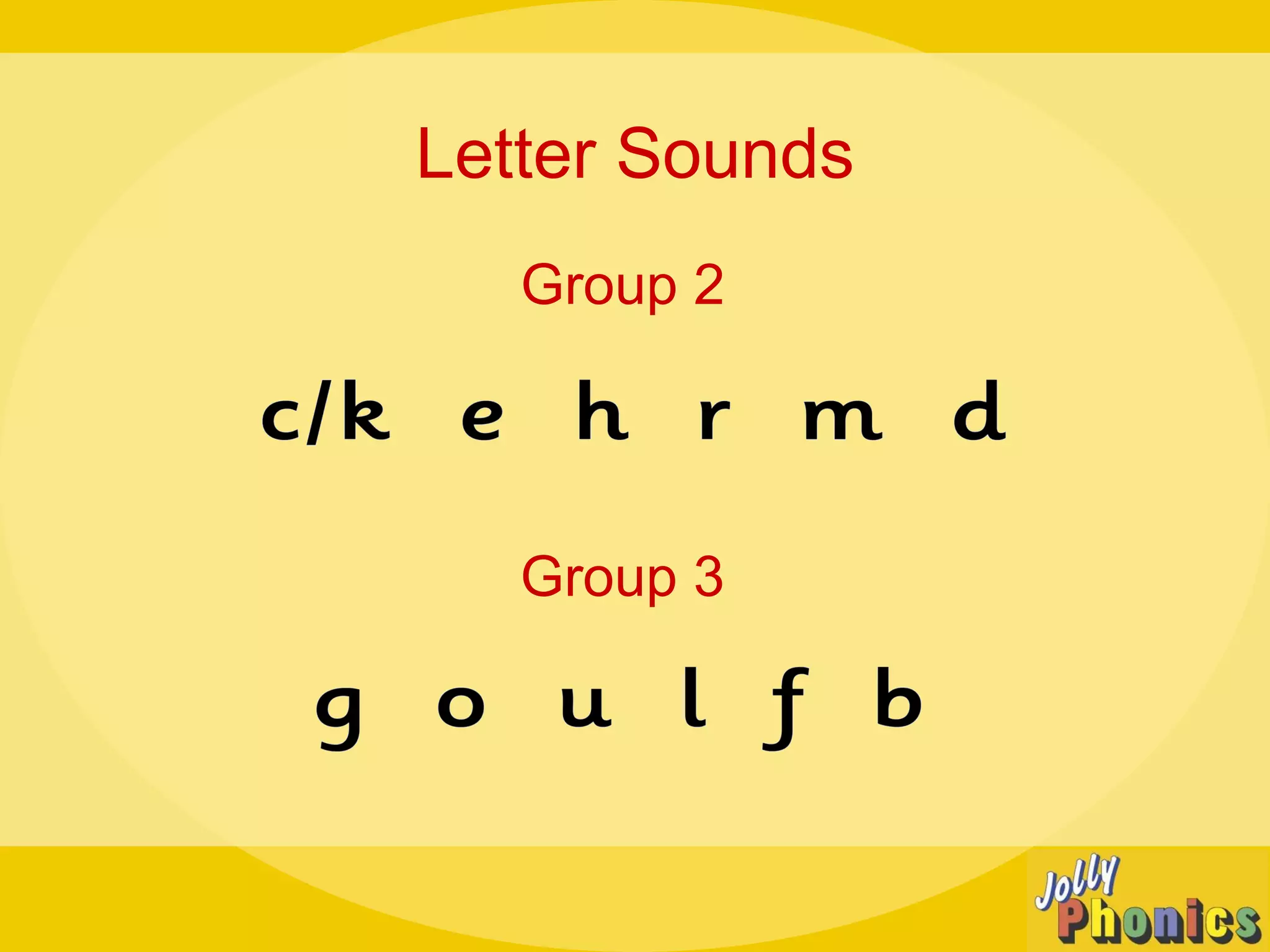This document outlines the basic skills and methods used in teaching early reading, including learning letter sounds, letter formation, blending sounds, identifying sounds in words, and tricky words. It describes activities for teaching individual letter sounds such as hand motions, sound sheets, blending words, and games. Dictation, word boxes, and reading tricky words are also discussed as ways to reinforce reading skills.






























